Framing & conserving a painting
I don’t offer framing for my portraits, however I hope you will find some of this advice on framing an painting useful. Feel free to contact me with any questions once you’ve received your portrait and I’m happy to make suggestions.
A painting is framed differently depending on the medium it has been made with, and what sort of surface it was painted on. Whilst watercolour or gouache paintings on paper are framed behind glass just like drawings, oil paintings traditionally are not. With acrylic paintings it’s less clear whether or not they should be glazed, with various arguments for and against.
Here I’ll look at the different conservational needs for framing oil paintings, acrylic paintings, and paintings made on paper (use the links to jump to those sections). I’ll also look at how to select an appropriate frame from the huge variety of styles on offer.
FRAMING OIL PAINTINGS
Why oil paintings have always been framed without glass
Traditionally, oil paintings were never framed behind glass and still today you’ll only see an oil painting with a glass frame in a museum or gallery if it’s particularly valuable, or is very vulnerable for some reason. There are several reasons for this. Partly it’s matter of tradition: oil paint has been around for many centuries and pre-dates the availability of very large sheets of plate glass, so it simply wouldn’t have been possible to glaze those big historical or biblical paintings and full length portraits.

Once oil paint is dry the pigments are protected on the canvas by a very hard film created by the oxidized oil. This means that oil paintings are at nowhere near as great a risk of damage or fading as a delicate watercolour made on paper. Unlike works on paper oil paintings can also be varnished to give them extra protection, and it is not usually considered necessary to protect them with glass as well. Instead it is thought much better to allow a painting to ‘breathe’, as any moisture trapped behind a sheet of glass might settle in the canvas and cause rotting to the fibres and the paint.
It’s considered especially important to avoid glazing an oil painting within the first few years its life. This is because oil paint dries very, very slowly and although it may feel touch dry within a week or two, the process of the oxidization of the oil content in the paint goes on for literally decades before it is fully ‘cured’. During this period there will be movement in the paint layers which can cause cracking and the painting will be particularly vulnerable.
Therefore it is better not to varnish a completed oil painting for six months, and not to frame it with glass for a few years. After this if you really want to frame your oil painting with glass (or if you have a much older painting to frame that has already had time to cure) then you can do so provided you make sure your framer adds a ‘spacer’ between the painting and the glass to allow for air to circulate in front of it. Below you can see the very large gap created in this museum frame to allow maximum space behind the glass.
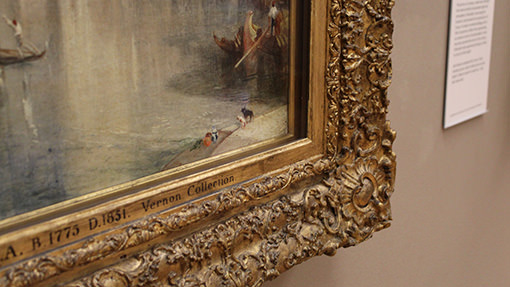
Glass does provide protection against household pollutants such as dust and soot, but this also needs to be balanced against the drawbacks of putting a painting behind reflective glass which will compromise your view of it. A varnished oil painting should be pretty well protected against dirt if it is hung in a suitable place (for example not near to an open fire or to candles) and is dusted regularly with a soft brush.
Further down, I’ll take a look at the different styles of frame and how to choose one which will compliment your painting. First however we’ll discuss the different requirements for framing a painting made in acrylic.
FRAMING AN ACRYLIC PAINTING
Acrylic paint is quite different to oil paint in its chemical composition and the way that it dries. Whilst oil paint uses an oil such as linseed oil to bind its pigment and set it on the canvas, acrylic paint is a water-based emulsion of acrylic polymer. It is flexible and dries rapidly as the water content evaporates, and this makes the layers of paint completely stable in a very short time, under normal climactic conditions.
There is one drawback to acrylic paint however, which is that it softens in heat. Therefore if an acrylic painting is kept in unstable temperatures where it heats a great deal and then contracts as it cools, it may actually be more vulnerable to cracking than an oil painting. Therefore keeping your acrylic painting away from intermittent sources of extreme heat (such as radiators, fires or ovens) is very important. Acrylic paint is chemically quite similar to decorators’ emulsion and attracts dust on the surface in the same way. If the paint softens too much (when the temperature reaches 30° Celsius, or 86° Farenheit) it may actually begin to absorb any dirt sitting on its surface. For some this is an argument for keeping acrylic paintings framed behind glass.
However with any painting, glazing creates the risk of trapped moisture being absorbed into the paint layers or the canvas, and therefore most people still prefer to frame an acrylic painting without glass so that it can ‘breathe’. Glazing will detract from the viewing experience of your painting and if you don’t really need to, then covering it with glass would be a shame. Make sure to keep it regularly dusted using a soft artist’s brush or a make-up brush, but not a cloth. As with any painting never attempt to clean it with water or any cleaning solution.
FRAMING A WATERCOLOUR, GOUACHE OR INK PAINTING
Framing any drawing made on paper is completely different to framing a painting made on canvas. Due to the vulnerability of the drawing surface, framing behind glass is considered a must and for the conservational reasons outlined above a mount (known as a ‘mat’ in some places outside the UK) should always be used to create a good space between artwork and glass for air to circulate.
This helps to prevent moisture from settling on the paper and causing buckling, mildew and problems like ‘foxing’ which is the name given to those dark brown spots that appear on old paper. If you really want to frame any painting on paper without a mount (known as ‘close framing’) then it’s important to ask your framer to add a spacer between artwork and glass to ensure some breathing space.
Below is a diagram showing how the mount and frame are assembled. The artwork is sandwiched between the window mount (the front mount, with the aperture) and a back mount (sometimes called a barrier board), which are all held in place by the ‘back board’. The edge of the mount is commonly cut on a ‘bevel’ to give it a slanted edge.
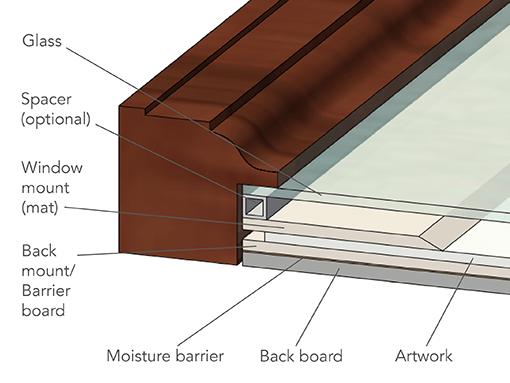
Framing an artwork with a mount
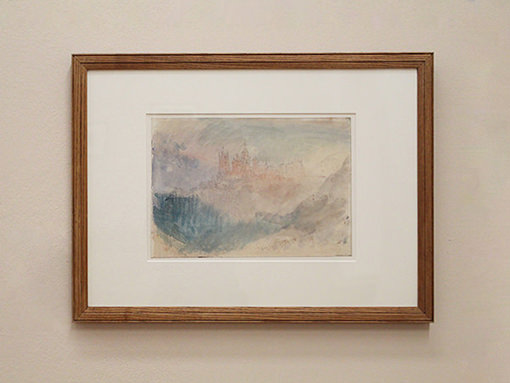
A floated watercolour
Whilst a mount is usually cut very slightly smaller than the size of the artwork and is used to trap the edges of the paper, it’s also possible to have it cut with a larger aperture so that the edges of the paper remain visible. This is a modern fashion for framing art on paper known as ‘floating’ the image. The framed watercolour above is an example.
About mounts (mats)
When choosing your mount, it’s very important to make sure that you select one that is ‘lignin-free’. Lignins are molecules found in the cell wall of plants and are present in any mount made from wood pulp unless it has been chemically treated to remove them. If they are not removed then they will degrade, releasing acid and turning a yellow colour. This will cause the core of your mount to quite quickly turn to an unattractive straw colour. Worse still, acid may eventually leach out of the mount and into your painting, causing a brown stain known as ‘mat burn’ and encouraging foxing, which thrives on acidic paper.
Choosing a good ‘conservation grade’ mount is the key to preventing these future problems. While most mounts will be marketed as ‘acid-neutral’ this may simply mean that they have been given an alkali treatment such as a bath of calcium carbonate to lower the pH. However unless the lignins have been removed, the mount will soon start to turn acidic.
‘Conservation whitecore’ mounts will be made from treated wood pulp with acid-neutralised ‘facing’ and ‘backing’ papers and will hopefully also have been given an alkali buffer to protect them from any future absorption of acid from the air. Any good specialist framing shop should be able to supply you with a Conservation grade mount, and some will also stock ‘Museum’ grade mounts which are made entirely from cotton fibres which are lignin-free to begin with.
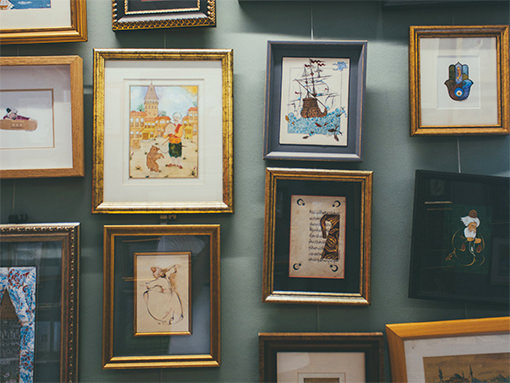
Once you’ve selected a range of board according to its conservational qualities, you’ll need to choose a colour and decide between a myriad of layering styles and decorative details. A painting on paper such as a watercolour, gouache or ink painting is framed exactly the same way as a drawing, and this article on framing a drawing› covers all of the possible effects that can be created when framing with a mount, as well as the options for different types of glass.
CHOOSING A FRAME FOR YOUR PAINTING
There’s an infinite choice of frame styles, and the one you choose is really a matter of personal preference. Of course you’ll want a frame colour that compliments those within the painting, however a typical frame in a neutral metallic or wood finish will generally go well enough with any paint colours. Equally you’ll want a frame that doesn’t clash with the colours in the room where you plan to hang it.
If you have a smartphone, take a photo of the you are going to hang or place your portrait in when visiting a framing shop. This will help your framer to suggest appropriate complimentary colours and will give him or her a sense of what style and colour of frame will suit your décor.
One thing to bear in mind is that paintings on paper have traditionally always been framed more simply than those painted on large canvases, and rarely with those very elaborate gilded mouldings. Because they are usually smaller and are made in a more delicate medium, a frame like this would overwhelm them in scale and in distracting detail. With a painting on canvas the choice of fancy frame or something very modern and simple is entirely up to you.
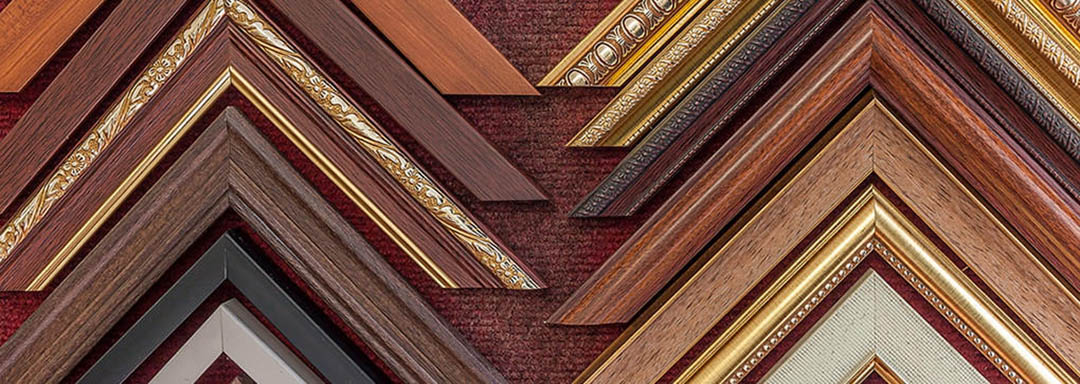
Although most people might choose a more ornate style of frame to hang in traditionally furnished room but a simple modern frame for a room with a more contemporary style, it is possible to deliberately create a contrast to striking effect. For example, an old painting in an ornate gilded frame that’s hung in a very modern interior makes a great statement!
To my mind, what matters more is that the painting and the frame are of a similar vintage, at least in style. It’s fine to put a modern painting in a simple timber frame, but I wouldn’t put it in an old and very fancy gilded one. Likewise I probably wouldn’t put a very old oil painting in a flat modern frame with a black, white or grey finish, or in a box frame. Something in a natural timber or a metallic finish would be more harmonious.
Some different framing options:
LINEN LINERS AND SLIP MOULDINGS
Whilst an oil or acrylic painting doesn’t require a mount because it isn’t framed with glass, many paintings on canvas are framed with a ‘liner’. This is a piece of timber that mimics a card mount. It serves to pull the viewers’ focus towards the image by giving a bit of ‘visual breathing space’ to the artwork. This may be particularly useful if a very ornate frame has been chosen which can distract from the painting. A liner isn’t integral, but is like a separate inner frame which is slotted under the rebate around the inner edge of the main frame.
Sometimes with an antique frame, the liner is simply gilded to match the main frame colour. However it is often covered with a piece of linen and then it is known as a ‘linen liner’. The linen covering is sometimes painted, but is more often left unpainted to display its natural light brown colour. It may be finished with a slip which is a tiny gilded moulding or filet of flat timber that is runs around inner edges and ‘slips’ under the rebate of the frame.
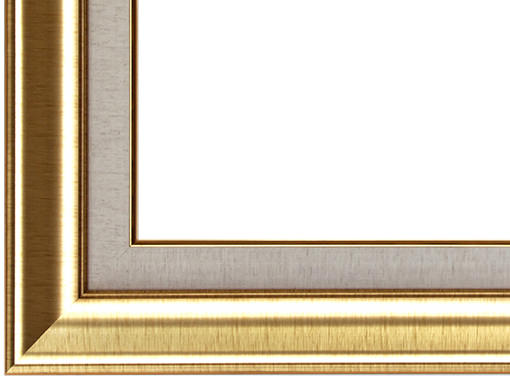
A frame with a linen liner
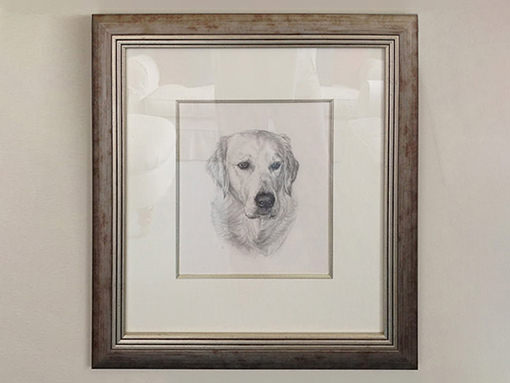
A frame with a slip moulding and a mount slip
Sometimes in place of a liner, a larger slip moulding may be used to run instead around the inner edge of the main frame. This is known as a ‘slip frame’. It adds extra width the the frame and creates a bit more interest. For example you’ll often see metallic coloured slips added to plain timber frames to create a frame that’s part timber and part gilded.
Slips may be used alongside a regular card mount for framing a watercolour or any drawing made of paper. Above is an example of a drawing framed with both a slip frame and a mount slip.
BOX FRAMES
A box frame, which is simple, restrained and usually painted in a neutral colour, is worth considering if you want to give the artwork a sense of prominence and feel that a completely unframed painting doesn’t feel quite ‘finished’, but you don’t want to overwhelm it. It is simply a flat rectangular frame attached to a base board which the painting is placed within.
A gap is maintained between the edge of the painting and the frame which may be as little as a quarter of an inch and designed to give just a small shadow gap. At other times it may be very wide, in order to to provide the visual space that a mount or liner would do, and to reveal the edges of the artwork all the way around.
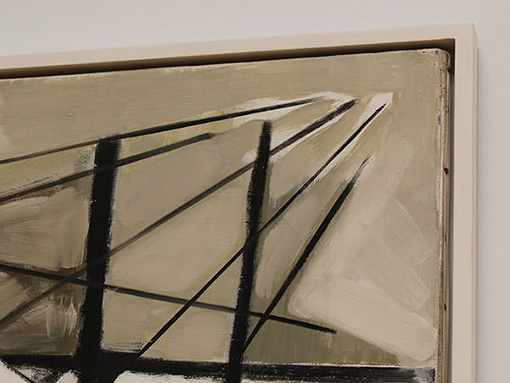
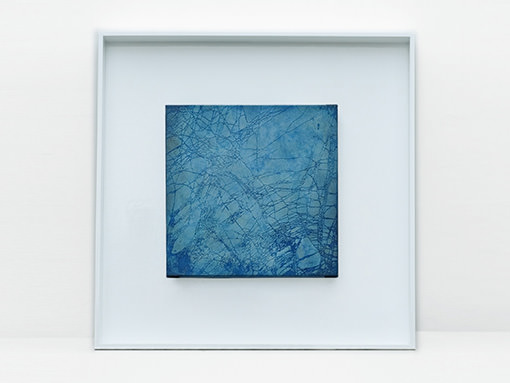
It’s not common to frame a watercolour or any painting made on paper within a box frame, because this type of frame has no way to ’trap’ the edges of the paper. However if you wanted to do so and to simply affix your artwork to the back of the frame then you could do so, provided that you source a frame with glass to protect the painting.
CONSERVATION AND HANGING
For paintings in all types of medium it’s important to avoid any source of damp, sources of pollution and and extremes and fluctuations of temperature. Here’s a checklist of ‘do’s and dont’s’ to help you find a suitable spot to safely hang your painting
- HEAT AND SMOKE: Don’t hang the painting above a radiator, near an oven, or any other source of heat. A unglazed painting placed in a room with a working fire can become discoloured from soot, whilst burning a candle will also cause soot damage. Don’t shine a spotlight directly at a painting, and avoid the ‘picture lights’ designed to be mounted just above the top of a frame to illuminate the painting.
- DAMP: Never store a painting that isn’t currently on display in a basement, garage, attic or shed even temporarily! Don’t hang a painting on a damp or newly plastered wall or too near to a vent.
- LIGHT: Try to avoid ever hanging a painting on a wall that gets lots of direct sunlight. A shady wall is always preferable. Avoid placing it too close to an electric, non-LED light which may emit a small amount of UV and could also overheat your painting if it’s too near. Consider using UV -deflecting glass when framing any artwork on paper to protect the pigments from fading and the paper from yellowing, a process which is exacerbated by exposure to UV.
- CLEANING: If your painting is unglazed, gently dust it regularly with a soft artist’s brush from an art shop or a soft makeup brush, but don’t use a cloth which may damage or scratch the surface of the paint. Don’t use water or any kind of cleaning product on it: if your painting really needs cleaning, take it to a professional restorer.

